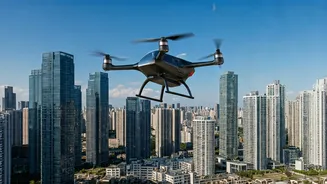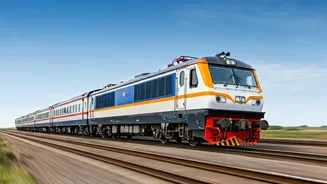Drone Taxis: The Vision
The concept of drone taxis, also known as urban air mobility (UAM), has captured the imagination of many. The dream involves electric vertical takeoff
and landing (eVTOL) aircraft whisking people across cities, bypassing traffic and reducing travel times. Andhra Pradesh has embraced this vision, setting a target to introduce drone taxis by 2027. This signifies a move to modernize its transportation infrastructure, similar to initiatives seen in other progressive regions worldwide. This venture may revolutionize how people navigate urban environments and boost economic growth within the state. The plans consider factors like air traffic management, infrastructure requirements (such as vertiports), and public acceptance of drone technology.
Technical Readiness Examined
eVTOL technology is experiencing rapid development. Several companies globally are working to create and test these aircraft, with prototypes already undergoing flight trials. These aircraft are designed to be electric-powered, aiming to reduce noise pollution and carbon emissions. However, the mass deployment of drone taxis in Andhra Pradesh or elsewhere will require robust technology. This includes reliable flight control systems, advanced battery technology to ensure sufficient range and flight duration, and fail-safe mechanisms for passenger safety. Furthermore, integrating these drones into existing air traffic management systems and ensuring seamless communication between the aircraft and ground control are critical for safe operations.
Infrastructure: Key Requirements
Introducing drone taxis requires significant infrastructure development. Vertiports, or designated take-off and landing sites, will be crucial. These vertiports must be strategically located, likely near major transportation hubs, commercial centers, and residential areas to maximize convenience. These facilities need to accommodate the landing and maintenance needs of the eVTOLs. Furthermore, the establishment of dedicated air corridors and the development of air traffic management systems specific to UAM operations are essential. In addition to these tangible assets, investing in charging infrastructure for the electric aircraft, as well as the workforce trained to manage the whole process, is vital.
Regulatory and Safety Checks
The regulatory landscape surrounding drone taxis is still evolving. Establishing clear regulations regarding flight paths, airworthiness certifications, pilot licensing (or automated operations), and passenger safety standards will be paramount. Aviation authorities must address critical areas, including noise regulations, to mitigate the potential impact of drone operations on populated areas. Public acceptance also hinges on safety. A strong regulatory framework and comprehensive safety measures that address potential risks, such as cybersecurity threats and emergency procedures, are vital. Ongoing surveillance and rigorous safety inspections will play a critical role in gaining public trust and ensuring the long-term viability of drone taxi services.
Economic and Social Impact
The introduction of drone taxis could have far-reaching economic and social impacts on Andhra Pradesh. The creation of drone manufacturing, operating, and maintenance jobs will boost the local economy. Shorter commute times can increase productivity and improve the quality of life for residents. The technology can also improve access to remote areas and enhance connectivity, particularly in regions with limited transportation infrastructure. However, potential challenges, like cost, affordability, and the accessibility of services, need to be addressed. Ensuring that drone taxi services are accessible to all residents, not just a select few, will be critical to achieve equitable outcomes and maximize the benefits of this innovative technology.














